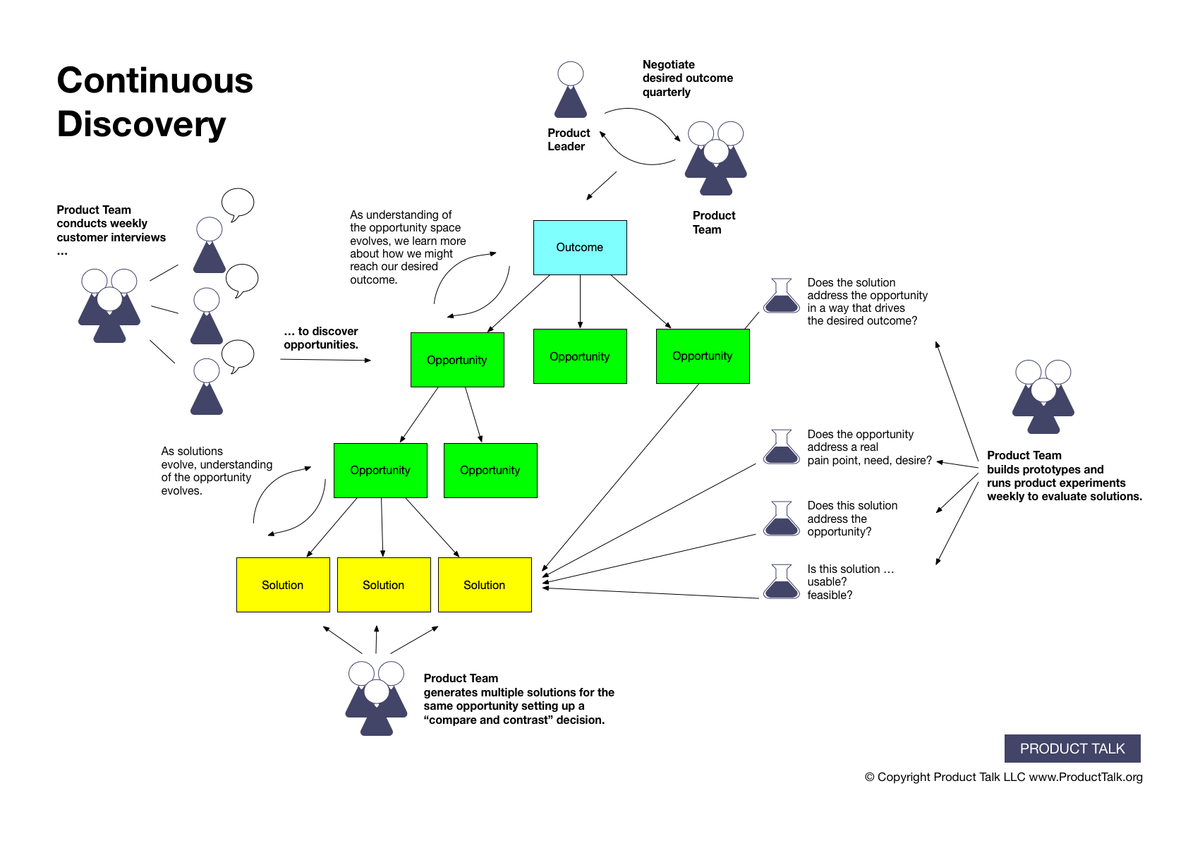Continuous Discovery

What is continuous discovery?
Teresa Torres defines continuous discovery in her book Continuous Discovery Habits as weekly touch points with customers by the team building the product, where they conduct small research activities in pursuit of a desired outcome.
This practice involves talking to customers, testing prototypes, and running experiments every single week. The goal is to have multiple data points from recent research whenever you need to make a product decision.
What are the three critical requirements for continuous discovery?
For discovery to be truly continuous, three conditions must be met:
- The team building the product must directly interact with customers—not learn through research reports or personas
- Research must be small, bite-sized activities that fit alongside other work like writing code and designing
- Focus must be on outcomes—the goal is to ship products that create customer value and drive business results
Why does continuous discovery matter?
Continuous discovery shifts teams from large, infrequent research projects to small, frequent touch points. This creates a sustainable rhythm that generates fresh insights precisely when teams need to make decisions.
Learn more:
- Product Discovery Basics: Everything You Need to Know
Related terms:
- Product Trio
- Customer Interviewing
- Outcomes
- Assumption Testing
Last Updated: October 25, 2025
